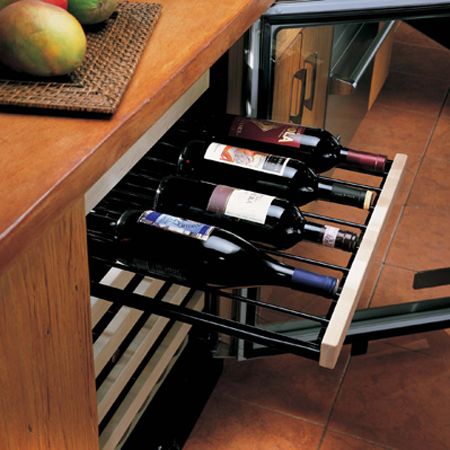 If you want to join the ranks of wine collectors who put bottles away for the future, you’ll need to provide your selections with the optimum conditions for aging. Proper storage improves the chances that your wines will delight, not disappoint, when you open them. Your storage system should have the following features:
If you want to join the ranks of wine collectors who put bottles away for the future, you’ll need to provide your selections with the optimum conditions for aging. Proper storage improves the chances that your wines will delight, not disappoint, when you open them. Your storage system should have the following features:
Shelves or racks for horizontal storage
Wine bottles should be stored on their side or upside down to keep the cork moist. A dry cork may not do its job of keeping oxygen out of the wine. One reason sommeliers present the cork to diners in a restaurant is so the customers can verify that the cork was moist.
Temperature control
Wine ages faster at warm temperatures. You’re trying to slow (not stall) the aging process, and the best temperature for that is 55ºF, plus or minus a few degrees. More important than achieving 55ºF exactly is keeping fluctuation at a minimum. A storage facility that ranges from 45ºF to 65ºF may give you the right average temperature, but the wine won’t like it. It could expand and contract enough to allow air to enter.
Protection from sunlight
Direct sunlight can cause temperature fluctuations, and ultraviolet light in particular can damage wine. Avoid wine shops that store real wines (not dummy bottles) in the window, or at least avoid those wines.
Humidity control
Not essential but desirable. In a low-humidity environment, the wine may slowly evaporate, creating ullage (air space) in the bottle’s neck. Oxygen will enter the bottle and could turn the wine to vinegar. A high-humidity setting (above 80 percent) can damage wine labels. If you can, adjust the humidity of your wine storage area to around 75 percent.
Shop Brigade at TA Appliance anytime on our website. Connect with us on Facebook and Twitter, for more of the TA Appliance Experience!
